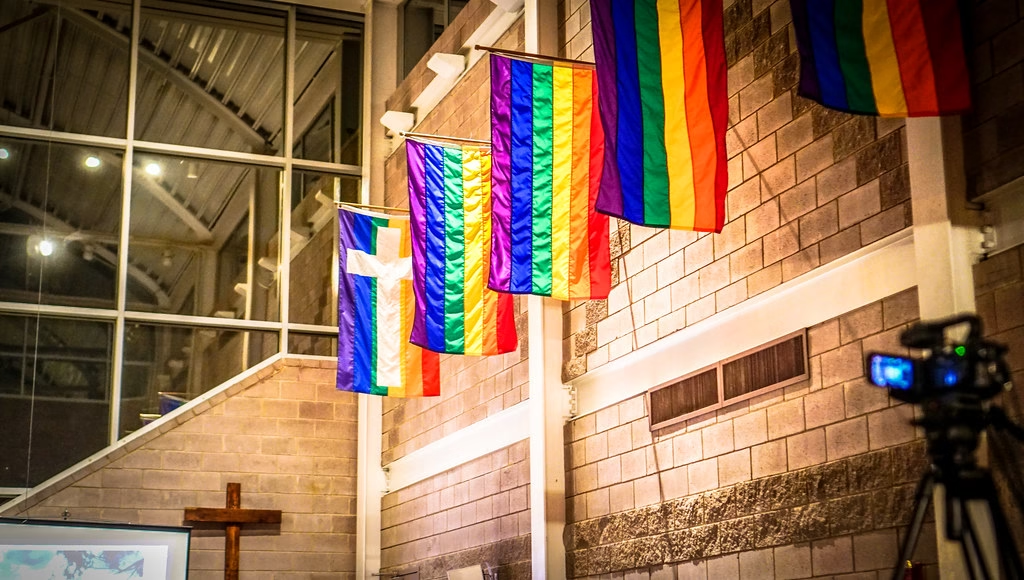November 1: A Day of Reflection, Celebration, and Historical Significance

- October 26: Historical Events
- October 27: A Journey Through History, Cultural Significance, and Cosmic Marvels
- October 29: A Day of Historic Transformations and Cosmic Discoveries
- October 30: A Day of Historical Significance
- October 31: A Day of Celebration, Reflection, and History
November 1: A Day of Reflection, Celebration, and Historical Significance
With its rich cultural, religious, and historical importance, November 1st occupies a unique place in the calendar. This day serves as a reminder of the connection between life, death, and remembering, from the solemn Christian celebration of All Saints’ Day to the colorful Mexican celebration of Día de los Muertos. November 1 is also significant since it marks historical anniversaries like the founding of the European Union and the dedication of the architectural marvel, Hagia Sophia. We get a greater understanding of this day’s significance in forming our cultural and historical identity as we investigate its many connotations and occurrences.
All Saints’ Day

A significant celebration in the Roman Catholic, Anglican, and Lutheran traditions, All Saints’ Day is observed on November 1st and is a Christian feast celebrating all saints, known and unknown. All Saints’ Day began in the fourth century and developed to honor martyrs and saints who were believed to have achieved eternal glory after leading saintly lives. This day offers a chance to recognize those who are regarded as role models for faith and dedication but do not have their own feast day on the church calendar.
In order to honor Christian martyrs and saints who sacrificed their lives for their faith—especially those whose names may have been forgotten—All Saints’ Day was first observed. When Pope Boniface IV dedicated the Roman Pantheon to the Blessed Virgin Mary and all martyrs in 609 AD, he established the event. Pope Gregory III formally declared November 1st to be All Saints’ Day in the eighth century, coinciding with the season when old pagan celebrations, including Samhain, paid tribute to the dead. All Saints’ Day became a global day of remembrance for the Christian community over time.
Catholics celebrate All Saints’ Day by going to Mass to commemorate the saints and by visiting graves to offer prayers for their loved ones’ souls. The communion of saints, or the spiritual connection of Christians on earth and those in heaven, is another aspect of the observance that is highlighted. The day is closely related to November 2nd’s All Souls’ Day, which is devoted to praying for the deceased who could still be in purgatory.
Christians are reminded of their spiritual history and are inspired to imitate the saints’ qualities on All Saints’ Day, which is both serious and joyous. In Christian beliefs, the festival emphasizes themes of faith, sacrifice, and the eternal bond between the living and the dead.
Festival of Samhain

Celebrated from October 31 to November 1, Samhain (pronounced “sow-in”) is an ancient Celtic holiday that signals the end of the harvest season and the beginning of winter. One of the four main seasonal celebrations in the Celtic calendar, it originated more than 2,000 years ago, mostly in Ireland, Scotland, and the Isle of Man. It was thought that at Samhain, which marked the change from the light to the dark half of the year, the line separating the material world from the spirit realm grew thinner, allowing spirits to pass through.
On Samhain night, people believed that fairies, ghosts of the dead, and other supernatural creatures wandered the land. Ancient Celts would leave food and drink offerings outside their dwellings in an effort to respect and please these spirits. Large community fires were constructed on hilltops as part of the Samhain celebrations, which also included bonfires. In order to provide protection for the approaching winter, people congregated around these flames to offer sacrifices of crops and livestock. They thought the fire had the ability to purify the village and fight off bad spirits.
Samhain was also the first to dress up in costume. In the hopes that the spirits would mistake them for other ghosts and spare them harm, individuals would dress in masks and disguises to avoid being identified by wandering spirits. This custom eventually gave rise to the Halloween costumes that we are familiar with today.
Samhain had a utilitarian component as well because it signaled the arrival of cattle from summer pastures and the killing of lesser animals to guarantee a supply of food for the coming winter. The celebration was crucial to agricultural viability and communal planning.
In contemporary Wiccan and pagan societies, Samhain is observed as a celebration of spiritual kinship and remembering. To keep Samhain’s ancient spirit alive, many people perform rituals, light candles, and pay respect to their ancestors and loved ones.
Día de los Muertos(Day of the Dead)

Celebrated on November 1st and 2nd, the Day of the Dead, also known as Día de los Muertos, is a profoundly ingrained Mexican celebration. This ceremony is a lively celebration honoring the spirits of departed loved ones, in contrast to the solemnity of traditional mourning. It creates a distinctive cultural blend of pleasure and memory by fusing native Aztec customs with Catholic influences introduced by Spanish colonists.
November 1st, sometimes called Día de los Inocentes or Día de los Angelitos, is a day to honor departed children, also called “little angels.” Families assume that children’s spirits return to earth on this day, and they make offerings to greet them. Día de los Muertos, or November 2, is customarily set aside for commemorating adults who have passed away.
The ofrenda, or altar, which is decorated with a variety of objects intended to entice the spirits, is the focal point of the festival. Calaveras (sugar skulls), pan de muerto (a particular kind of bread), marigold flowers, pictures, and the deceased’s personal belongings are frequently found on altars. Cempasúchil, or marigolds, are thought to help souls return to the world of the living by illuminating the way with their vivid orange hue and aroma.
Traditional dancing, music, and even parades are all part of the festivities, which are meant to honor life rather than lament death. Skeletal iconography, especially that of La Catrina, a chicly attired skeleton, has become a symbol of the occasion and represents the merging of life and death.
Families pay tribute to the departed by giving them a place among the living again via Día de los Muertos. This special event, which is observed year after year with pleasure, food, and custom, emphasizes that death is not a conclusion but a continuance, with the deceased still present in spirit.
The Maastricht Treaty(European Union)

On November 1, 1993, the European Union (EU) was legally established by the Maastricht Treaty, also known as the Treaty on European Union. The treaty, which was signed in Maastricht, Netherlands, established the EU’s framework and broad goals, marked a dramatic change in European integration. Building on previous attempts to economically and politically integrate European nations, such as the European Coal and Steel Community (1951) and the European Economic Community (1957), it sought to strengthen economic cooperation, create a closer political union, and advance peace and stability within Europe.
The adoption of the idea of a unified European currency, the euro, was one of the treaty’s most revolutionary features. It outlined a plan for creating the Economic and Monetary Union (EMU), along with certain convergence requirements that participating nations would have to fulfill in order to use the currency. The introduction of the euro in 1999 and, subsequently, the actual euro coins and notes in 2002 marked the culmination of this endeavor.
The Maastricht Treaty established a new political framework with three primary pillars: the European Communities, the Common Foreign and Security Policy (CFSP), and Justice and Home Affairs (JHA). This was in addition to economic integration. Member states were able to protect national sovereignty in crucial areas while cooperating in other areas because to this structure. In order to achieve a more cohesive position on international issues, EU countries decided to collaborate on foreign policy and security concerns through the CFSP.
In addition, the Maastricht Treaty promoted a feeling of European identity by granting EU citizens rights like the freedom to live and work in any member state and the ability to cast a ballot in European elections. Additionally, the treaty promoted democratic representation inside the EU by strengthening the function of the European Parliament.
A turning point in European history, the Maastricht Treaty established the contemporary EU’s structure and paved the way for greater political and economic union, both of which continue to influence Europe’s position in the world.
UNESCO’s founding

Shortly after World War II ended, on November 1, 1945, the United Nations Educational, Scientific, and Cultural Organization (UNESCO) was formally established. The destruction of the conflict made it clear that international collaboration was urgently needed to advance peace, foster understanding among nations, and address pressing issues in science, culture, and education. Since its founders felt that “the intellectual and moral solidarity of humanity” was the foundation of enduring peace, UNESCO was founded with the goal of promoting international cooperation in the fields of education, science, and culture in order to promote world peace and security.
The breadth of UNESCO’s activities reflects its goal of bridging cultural gaps and promoting the sustainable development of communities everywhere. In the field of education, UNESCO has significantly advanced universal primary education, reduced gender inequality, and promoted literacy. Notably, it is in charge of the Global Education Monitoring Report, which evaluates educational advancement and pinpoints obstacles to guaranteeing equitable access to high-quality education throughout the world.
Addressing urgent global concerns including biodiversity loss, ocean health, and climate change, UNESCO fosters scientific collaboration and study. Its major oceanographic initiatives, including the Intergovernmental Oceanographic Commission, support sustainable environmental practices and aid in the research and preservation of marine resources.
Through programs like the World Heritage Sites program, which finds and conserves sites of cultural or natural value, UNESCO also protects cultural heritage. In order to preserve customs, dialects, and artistic expressions that contribute to human variety, the program places a strong emphasis on the preservation of both material and intangible cultural assets.
UNESCO now has 11 associate members and 193 member nations. Its focus has expanded to include new worldwide concerns including digital literacy and the ethics of artificial intelligence. As a pillar of the UN’s mission to promote equality, human rights, and peace, UNESCO works to promote understanding and solidarity through education, research, and culture in a world that is changing quickly.
Hagia Sophia was dedicated

One of the most important architectural accomplishments of the Byzantine Empire, the Hagia Sophia, was dedicated on November 1, 537 AD. Emperor Justinian I ordered the cathedral to be constructed as the main church in Constantinople, which is now Istanbul, and to demonstrate the might and splendor of the Byzantine Empire. It took the site of a previous basilica that had been demolished in 532 AD during the Nika Riots. Two mathematicians, Anthemius of Tralles and Isidore of Miletus, created the Hagia Sophia, which translates as “Holy Wisdom” in Greek. Their creative structural technique made possible the building’s distinctive, enormous dome.
The Hagia Sophia’s enormous central dome, which seems to float because of its integration with the surrounding windows that let in natural light and give the room a mystical feel, is one of its most striking aspects. At the time, the roughly 32-meter-diameter dome was an engineering wonder that established new benchmarks for architectural style and served as a significant template for upcoming mosques and churches across the globe. Byzantine art and religious imagery are reflected in the interior’s elaborate marble flooring, elaborate mosaics, and columns taken from ancient Roman temples.
Many changes have been made to Hagia Sophia over the years. Sultan Mehmed II transformed Constantinople into a mosque when the Ottoman Empire overran it in 1453. He combined Byzantine Christian and Islamic architectural styles by adding minarets and other Islamic architectural features. Under Mustafa Kemal Atatürk’s secular rule, it was converted into a museum in 1935, signifying both historical preservation and religious tolerance. It received another mosque designation in 2020. Notwithstanding these changes, Hagia Sophia continues to be a famous building that attracts millions of tourists each and represents the meeting point of history, religion, and culture.
USA’s National Authors’ Day

The United States observes National Authors’ Day on November 1st to honor writers and their contributions to literature. This day offers a chance to honor the imagination, commitment, and labor that writers invest in creating information, tales, and insights for readers. Teacher and Illinois Women’s Club president Nellie Verne Burt McPherson was the driving force behind the establishment of National Authors’ Day in 1928. McPherson, a voracious reader, was looking for a formal method to celebrate authors because he wanted to acknowledge the influence they have on readers’ lives. In 1949, when she presented the concept to the General Federation of Women’s Clubs, the U.S. November 1st was formally designated as National Authors’ Day by the Department of Commerce.
This day is inclusive of aspiring and lesser-known writers as well as established or well-known authors. It’s an opportunity for readers to consider how literature has impacted their lives and to commemorate their favorite authors by buying books, sending thank-you messages, or sharing on social media. To promote literacy and a greater understanding of literature, schools and libraries frequently host activities or suggest particular readings on this day.
National Authors’ Day gives writers a chance to honor their colleagues, engage with their readers, and maybe even reveal a little bit about their writing process. Online platforms have enhanced this celebration in recent years by enabling authors and readers from all over the world to gather in virtual groups and share tales and ideas.
All things considered, National Authors’ Day celebrates the contribution that authors make to influencing society, stimulating the intellect, and igniting the imagination. It is a day that unites writers and readers and cultivates appreciation for the tales that continue to change and enhance people’s lives.
Final Thought: November 1
Globally, November 1 is a day of great cultural, historical, and religious significance. This day encompasses a wide range of customs and significant occasions, from the celebration of Día de los Muertos and All Saints’ Day to the commemoration of important occasions like the founding of UNESCO and the European Union. We are reminded of our connection to the changing seasons and the spiritual beliefs associated with them by the heritage of ancient customs such as Samhain. National Authors’ Day also acts as a reminder of how important literature is in forming our perception of the world. All things considered, November 1st celebrates the rich legacy that enhances our lives now while encouraging introspection about the past.
You also may like: newstimzone.com/blog




















November 3: Significant Historical Events
November 1, 2024[…] November 1: A Day of Reflection, Celebration, and Historical Significance […]
Veterans Day 2024: Honoring America's Heroes
November 1, 2024[…] November 1: A Day of Reflection, Celebration, and Historical Significance […]